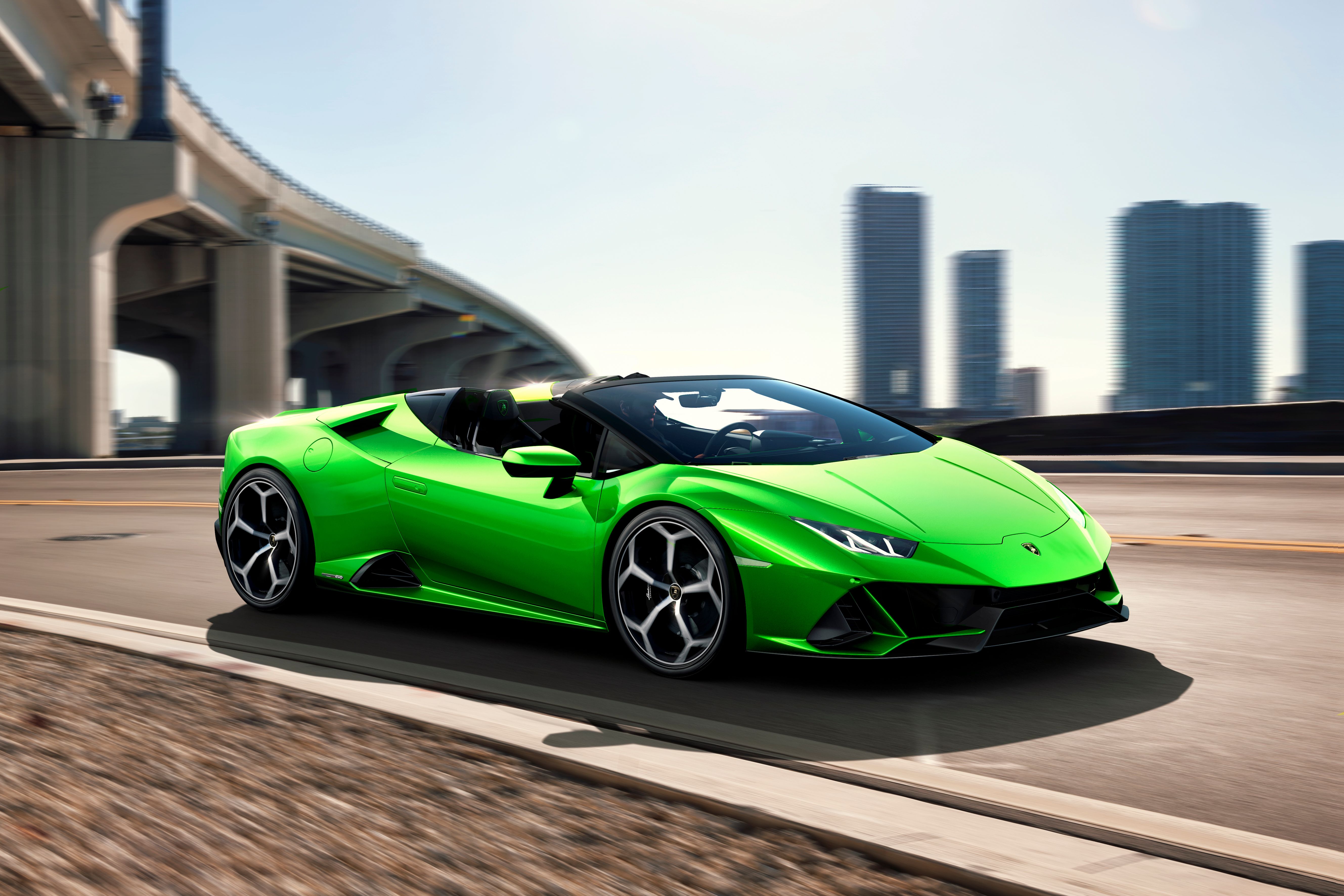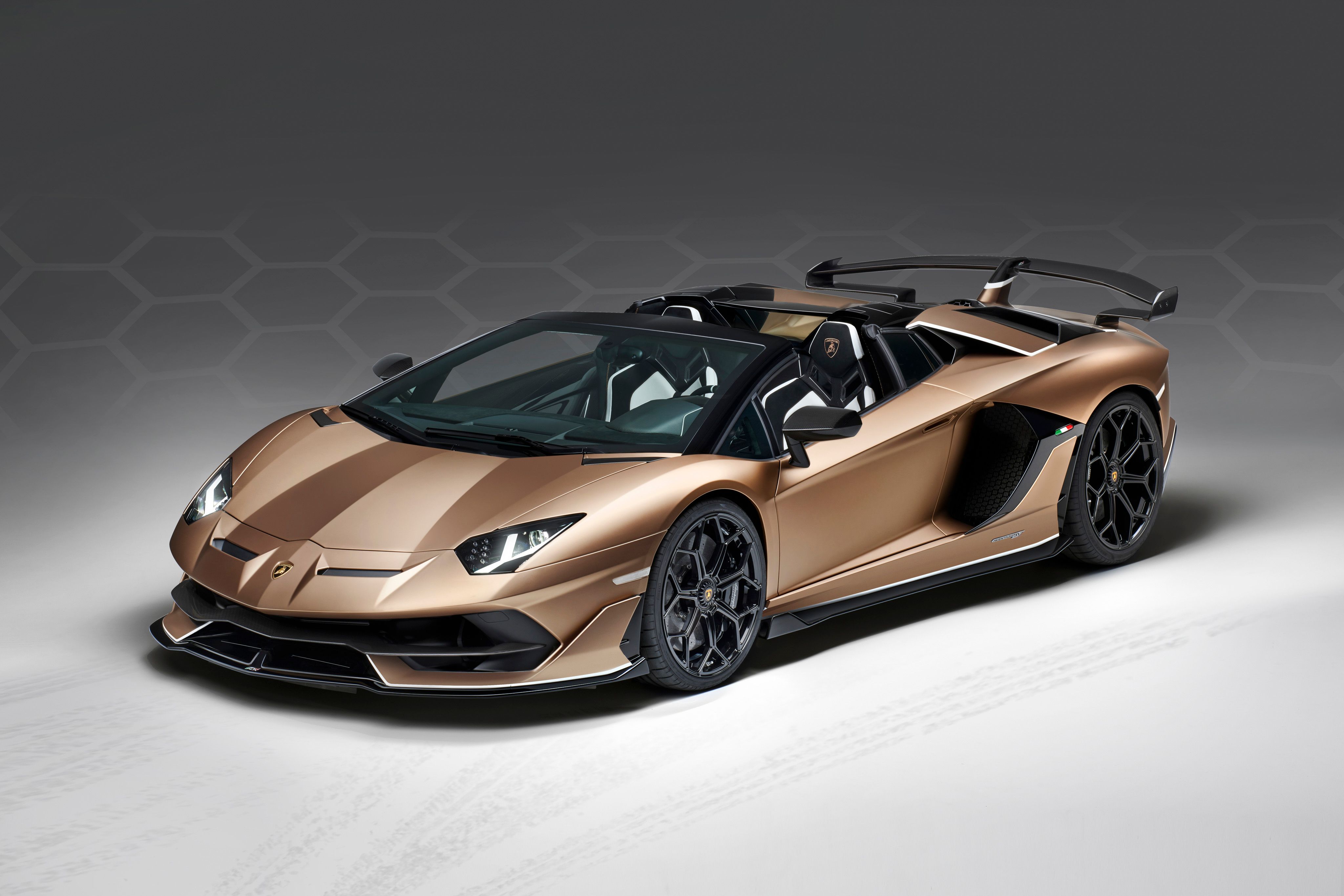Regardless of your take on manual transmissions, you can't deny the added layer of involvement they provide to the driving experience. This is why it's sad that modern supercar makers have all but ruled out the usage of such old-school transmissions for the sake of both costs and performance. Lamborghini is one of them although they were close to offering one on some special edition Huracan and Aventador models.
You and I both know that a robotized automatic transmission with one or multiple clutches is quicker at shifting through gears than any biped creature we commonly refer to as a human. In spite of this, you and I both would like to be able to do things our way, at our own pace. Of course, that's what flappy paddle gearboxes are for, but there's nothing quite like the added difficulty of a third pedal and a stick between the seats. Lamborghini has been telling us for years that the manual is dead - at least as far as it's concerned - but the Italians prove they are genuine petrolheads because, in the meantime, they did at least look into it to make sure once again that the initial assessment was right. Props to Sant'Agata for that!
It's More Likely For You to See a Real Unicorn Than a New Manual Lamborghini
Lamborghini is more profitable than ever.
Now, though, there are more rich people than ever and, also, thanks to the advent in technology on all fronts, modern supercars are usable and reliable to the point that anyone can drive one around and about without worrying for his health and safety. You couldn't say the same about a you-can't-see-outside Lamborghini Countach or an it-might-catch-fire-at-random Lamborghini Miura. But you can when talking about a Huracan. Part of making the supercar experience more accessible, while also pursuing the ever-present desire to bring more to the table in terms of performance, has been the implementation of ultra-quick transmissions.
Lamborghini is no stranger to such gearboxes and, currently, fits a seven-speed dual-clutch transmission on all of its models. The last manual Lamborghini was the Gallardo LP560-2 50th Anniversary. This was the bare-bone facelifted Gallardo, the twin brother of the Gallardo LP560-2 Balboni Edition.
But this, as we have found out much more recently, wasn't for lack of trying on Lamborghini's part. Some four-five years ago, Maurizio Reggiani answered a number of questions on the topic of Lamborghini's manuals or, more to the point, the lack of such transmissions. Around the time the Huracan was launched, Reggiani, who acted as Lamborghini's Head of Research & Development, told the press that "close to zero percent Gallardos were ordered in manual." What is more, then-CEO Stephan Winkelmann (Bugatti's current CEO), admitted that "every time came in they had to go back and re-check the order form, confirming with the dealership that a mistake hadn’t been made," according to Auto Guide.
Road & Track also asked Reggiani this hard-pressing question and he explained that all the robotics work in tandem within the modern hypercar and putting a manual box in would just disrupt all of the electronics.
He then added that "it's the demand of the control of the chassis. If you want to control the chassis, you must control the power. If you want to control the power, the clutch must be under the control of the brain of the car, not your brain." He also argues in the same piece that modern manuals aren't as pure as you'd think they are because "in all the latest manual transmissions, there is a servo that reduces the load ," he explains. "If we want to talk about the purist , we must go back 20 years, not ten years, because already these filters were in place.
There were also other reasons at play, for instance, that "you needed 88.2 pounds of force to disengage the clutch . At that time, we were making 332 pounds-feet of torque. Now we are at 509 pound-feet of torque. It's a problem to manage the closing point of the clutch. If you have hesitation, with this torque, you'll burn the clutch immediately." And this isn't good for Lamborghini's business because many of its clients aren't professionals. It all goes down to my original point of making supercar performance available to more people to be able to sell more cars.
But, as I said, the current state of affairs could have been different. Lamborghini really wished it was.
According to Lamborghini CEO Stefano Domenicali, who sat down for lunch with Motor Trend, even if a $25,000 premium was added to the MSRP of a Huracan or an Aventador, it wouldn't be enough to raise enough money to develop the transmission - considering each model would be sold as part of a 200-unit limited edition. By adding up the numbers, it means Lamborghini would require well over $5 million to develop a bespoke transmission for the Aventador as there isn't any around fit for the job in Volkswagen's yard or elsewhere at a third-party gearbox builder.
Sadly, you can expect the status quo to remain unchanged as the company moves closer and closer to an electric future.
What's also interesting is that, in the future, there might be a fifth model in Lambo's lineup and it might be another high-riding vehicle. No, a Urus Coupe or Urus Pickup isn't what Lamborghini has been looking into. Instead, a genuine follow-up to the popular (but also very rare and ludicrously expensive to buy) LM002 from the '80s could be on the cards. The original was a bonkers Frankenstein mobile with the engine from a Countach and the profile of a Hummer. It was, actually, supposed to be a military vehicle but, in the end, almost 400 were made for the public highways and every other terrain you can imagine.
According to Domenicali, some Lamborghini aficionados are so into the LM002 that they're inquiring right at the factory about LM002 buying opportunities of which, if you pay attention to public auctions, there are few and far between.
Further reading
Read our full review on the 2019 Lamborghini Urus
Read our full review on the 2017 Lamborghini Huracan Performante.
Read our full review on the 2017 Lamborghini Huracan.
Read our full review on the 2019 Lamborghini Aventador SVJ Roadster


